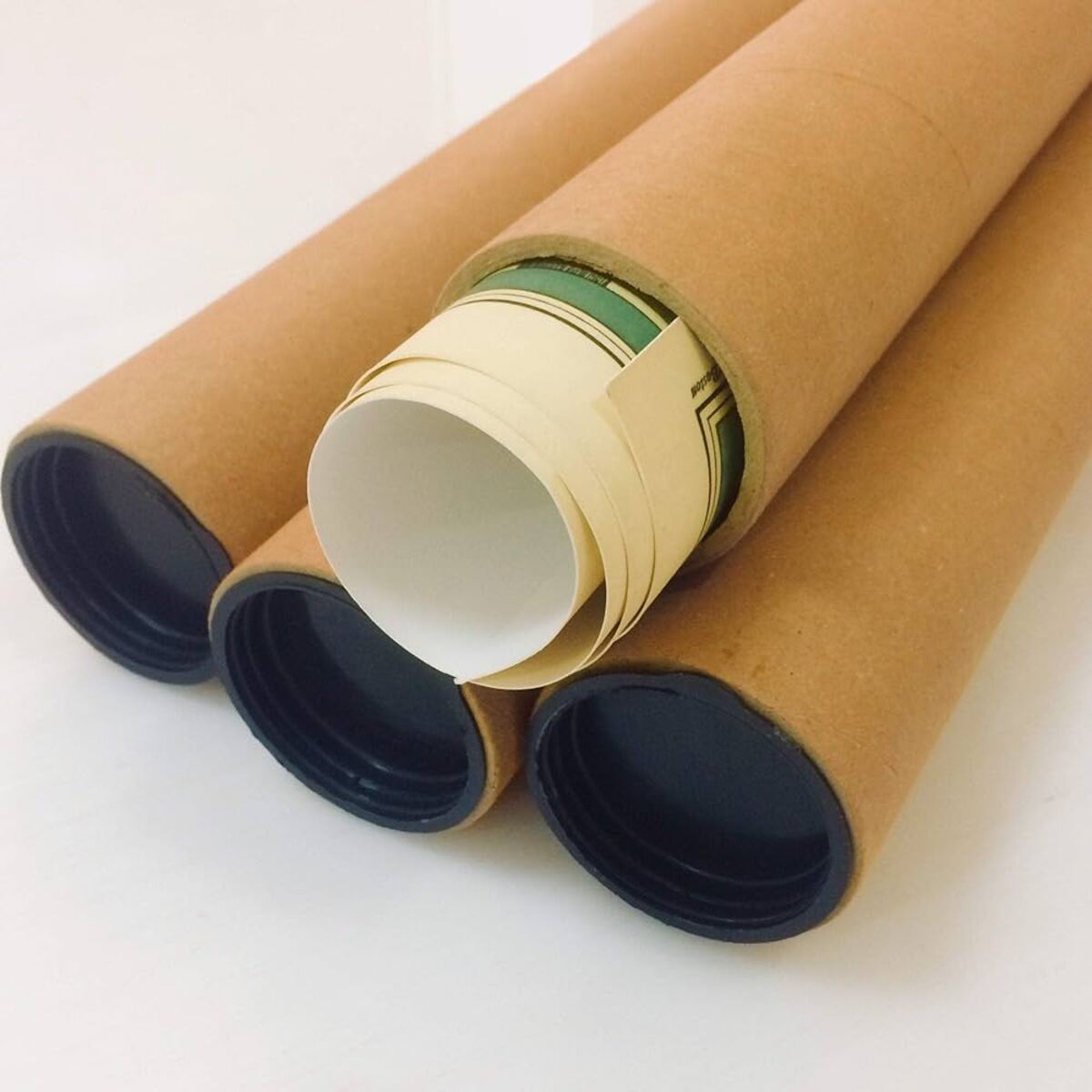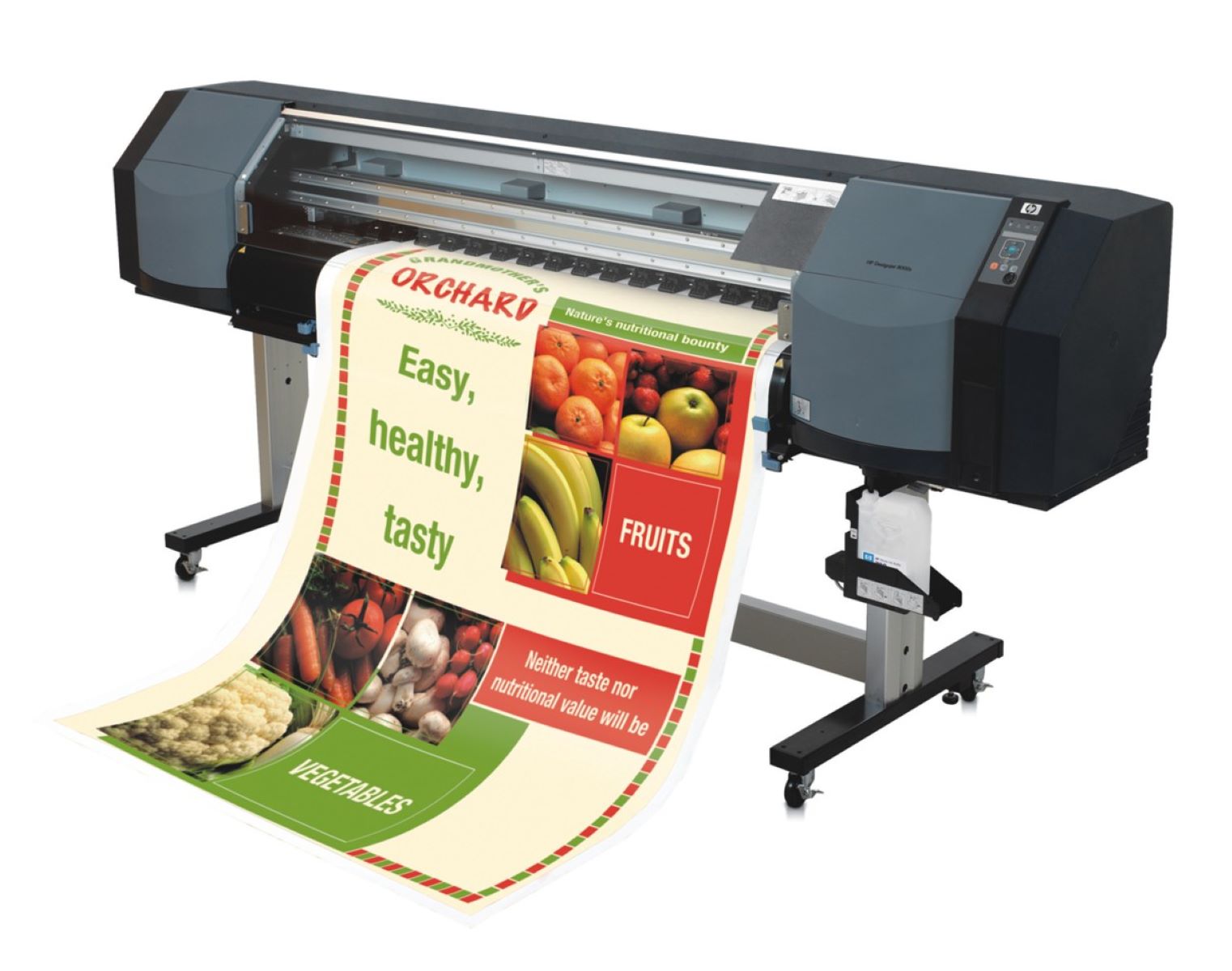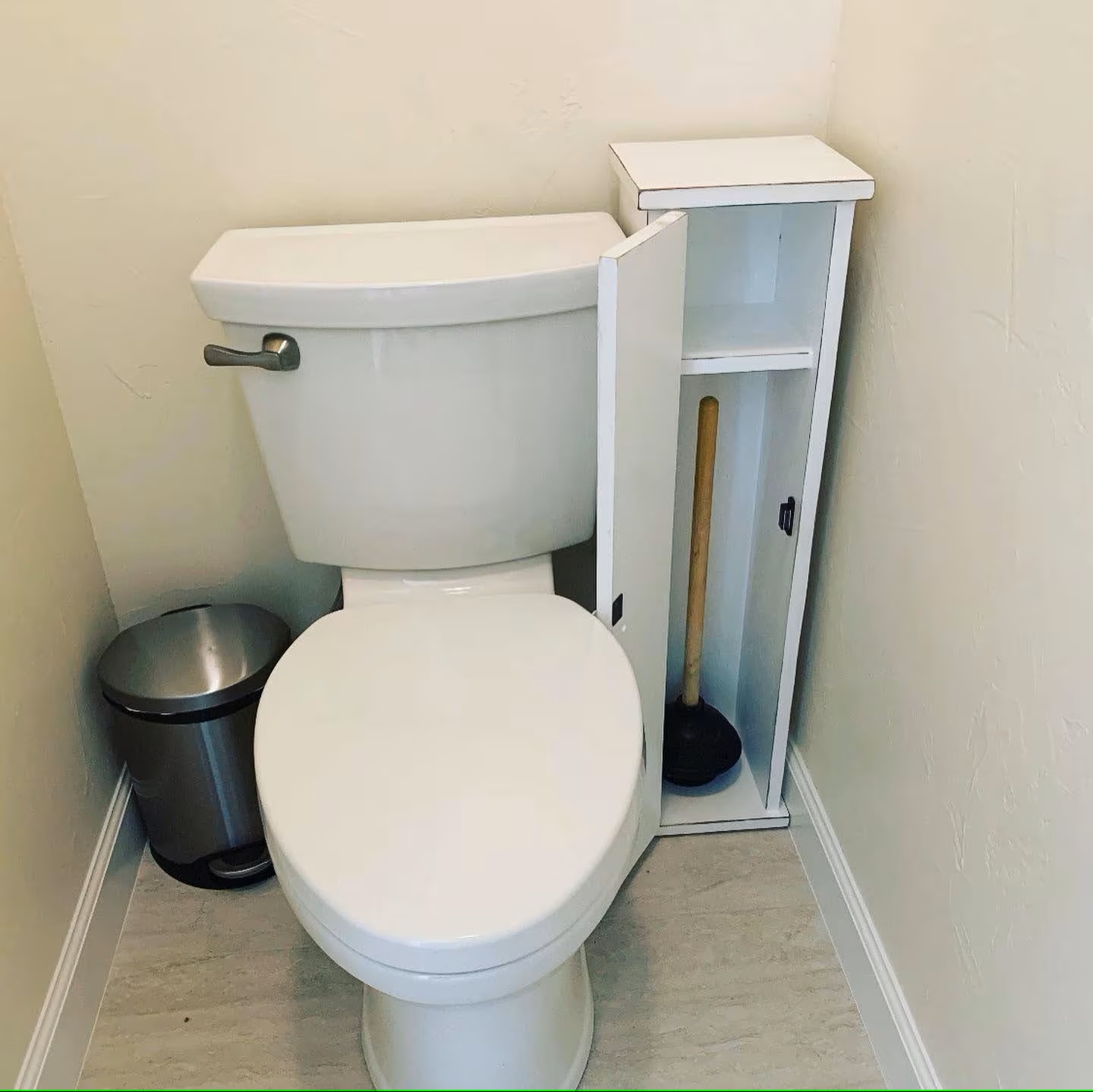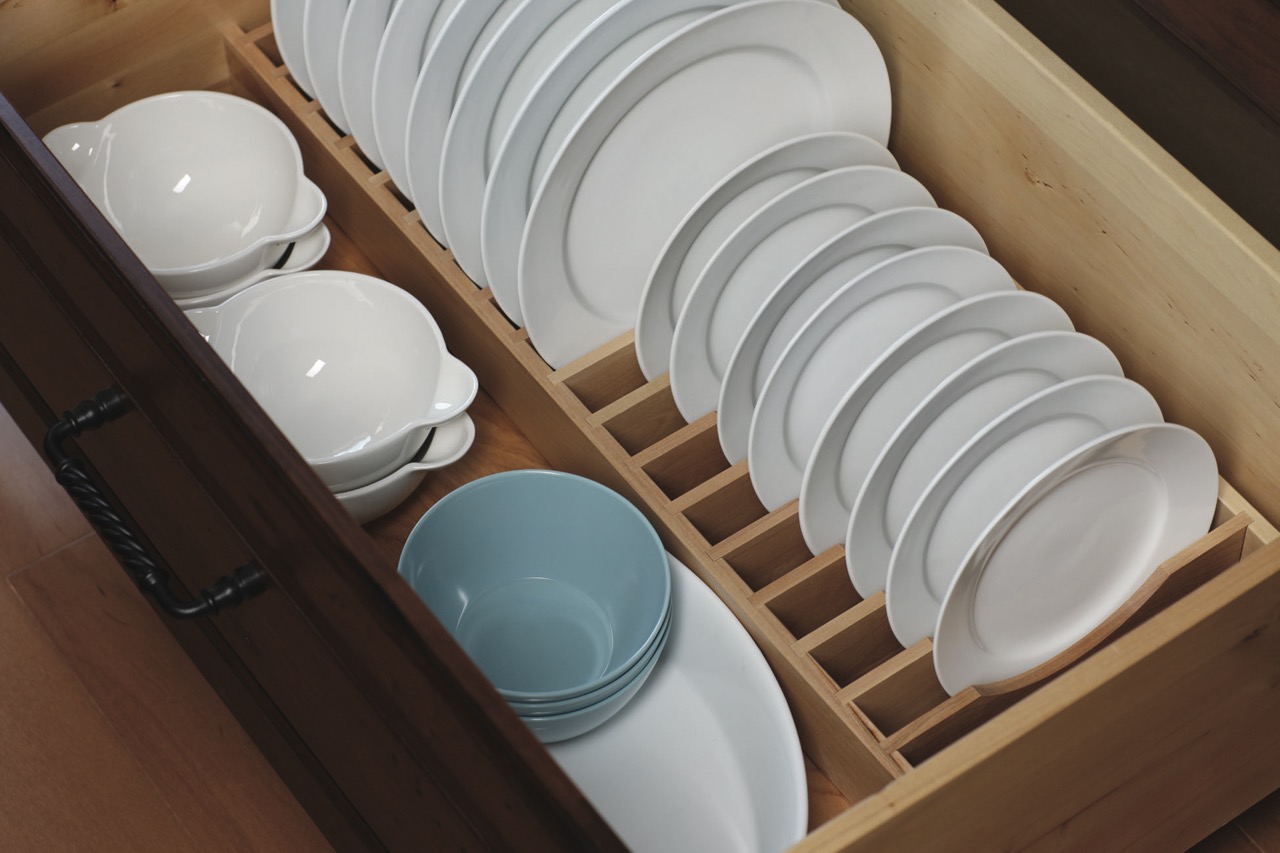

Articles
How To Store Posters
Modified: February 28, 2024
Learn the best way to store articles like posters to ensure their longevity and preserve their quality. Discover top tips and techniques for proper storage.
(Many of the links in this article redirect to a specific reviewed product. Your purchase of these products through affiliate links helps to generate commission for Storables.com, at no extra cost. Learn more)
Introduction
Posters are a popular form of visual art, used for advertising, promotion, and decoration. Whether you’re a collector, a movie enthusiast, or simply someone who loves to display posters, it’s essential to know how to store them properly to preserve their quality and longevity.
Improper storage can lead to damage such as fading, creases, tears, and even mold growth. Therefore, it’s crucial to choose the right storage method based on the type of poster and the space you have available.
In this article, we will explore various storage techniques and tips to help you keep your posters in pristine condition. Whether you have a single poster or a collection, these guidelines will ensure that your investment stays safe and ready for display whenever you desire.
Remember, taking the time to store your posters correctly not only protects their value but also allows you to enjoy them for years to come.
Key Takeaways:
- Preserve your posters’ quality and value by choosing the right storage method based on their type and your available space. Proper preparation and long-term storage considerations are crucial for maintaining their longevity.
- Whether it’s flat, rolled, framed, or hanging storage, taking the time to store your posters correctly will protect their integrity and ensure they can be enjoyed for years to come. Remember to regularly inspect, clean, and handle them with care.
Read more: How To Store Posters Flat
Choosing the Right Storage Method
When it comes to storing posters, there are several factors to consider, including the size, condition, and quantity of the posters, as well as the available storage space. Here are some commonly used storage methods to choose from:
- Flat Storage: This method involves laying the posters flat in archival sleeves or acid-free folders. Flat storage is ideal for delicate or valuable posters that need extra protection against creasing or bending. It works well for smaller collections with limited space.
- Rolled Storage: Rolling posters is a popular storage method that reduces the risk of creases and allows for easy transport. Use acid-free or archival-quality tubes or poster mailers to roll the posters. This method is suitable for posters that can withstand rolling without damage.
- Tube Storage: If you have limited space, storing posters in tubes can be a practical solution. Choose sturdy, acid-free tubes to prevent damage from moisture and light. Label each tube with the contents for easy identification.
- Framed Storage: Framing posters not only enhances their appearance but also provides protection. When selecting frames, opt for UV-resistant glass or acrylic to prevent fading. Hang framed posters in a space where they won’t be exposed to direct sunlight or fluctuating temperatures.
- Hanging Storage: This method is suitable for large posters that are too cumbersome to store flat or rolled. Use clips or hangers to suspend the posters from a rod or wire. Ensure that the clips are gentle and won’t leave indentations or marks on the posters.
Each storage method has its advantages and considerations. Assess your posters’ condition and your available space to determine the best option for you. Remember to prioritize protection against light, moisture, and physical damage when choosing a storage technique.
Prepare the Posters for Storage
Before storing your posters, it’s important to prepare them properly to minimize the risk of damage. Here are some steps to follow:
- Clean the posters: Use a soft, lint-free cloth to gently wipe any dust or dirt off the surface of the posters. Avoid using harsh cleaning agents or excessive force, as this can cause damage.
- Remove any adhesive: If your posters have tape or adhesive residue, carefully remove it using a mild adhesive remover. Test the remover on a small, inconspicuous area of the poster first to ensure it doesn’t damage the ink or paper.
- Mend any tears or creases: If your posters have any tears or creases, consider repairing them before storage. Use acid-free tape or archival adhesive to mend small tears. For larger tears or significant damage, consult a professional paper conservator.
- Protect from light and moisture: Posters are susceptible to fading and water damage. Store them in a dark, dry environment away from direct sunlight, humidity, and moisture sources. Consider using a dehumidifier or moisture-absorbing packets in the storage area.
- Use acid-free or archival-quality materials: Acid-free sleeves, folders, tubes, and framing materials are essential for long-term poster storage. These materials prevent acid migration, which can cause discoloration or degradation of the posters over time.
By taking the time to prepare your posters properly, you can safeguard them from potential damage and ensure their longevity. When it comes time to display or sell your posters, they will be in excellent condition and ready to shine.
Flat Storage
Flat storage is a popular method for preserving posters, especially those that are fragile, valuable, or prone to creasing. Here’s how to store your posters flat:
- Choose acid-free materials: Acid-free archival sleeves or folders provide a protective barrier against environmental factors. Ensure that the materials you use are large enough to comfortably fit your posters without bending or folding them.
- Place posters in sleeves or folders: Carefully insert your posters into acid-free sleeves or folders, making sure they are flat and not overly compressed. Avoid using rubber bands or paperclips, as they can leave indentation marks or cause damage.
- Label and organize: Label each sleeve or folder with relevant information such as the poster’s title, date, and any other identifying details. This will make it easier to locate specific posters in the future. Additionally, you can organize the sleeves/folders in chronological or alphabetical order for easier access.
- Store in a dry, dark place: Find a cool, dry, and dark storage area that is away from direct sunlight and sources of moisture. Extreme temperature fluctuations and excessive humidity can warp or degrade the posters over time.
- Protect from insects and pests: Use precautionary measures such as mothballs or cedar blocks to deter insects and pests from damaging your stored posters. Be sure to check the storage area periodically for any signs of infestation.
Flat storage is an excellent choice for preserving the quality and integrity of your posters. By using acid-free materials and creating a suitable storage environment, you can keep your posters flat and safe from potential damage for years to come.
Rolled Storage
Rolled storage is a convenient and space-saving method for storing posters, especially those that can withstand rolling without damage. Follow these steps to store your posters rolled:
- Choose the right tube or poster mailer: Select a sturdy, acid-free tube or poster mailer that is wide enough to accommodate the width of your posters without excessive tightness. Make sure the tube is long enough to hold the entire length of the poster.
- Clean and prepare the posters: Ensure that your posters are free from dust, dirt, and any adhesive residues. You can gently wipe them with a soft, lint-free cloth before rolling.
- Roll the posters carefully: Starting from one edge, slowly and evenly roll the poster, making sure to keep it straight as you go. Avoid rolling too tightly, as this can cause creases or damage to the poster.
- Secure the rolled poster: Once the poster is rolled, secure it with acid-free or archival-quality rubber bands or cotton ribbons. Avoid using regular rubber bands as they can deteriorate and cause damage over time.
- Label the tube: Clearly label the outside of the tube with the poster’s title, date, and any other relevant information. This will help you easily locate specific posters when needed.
- Store in a dry, cool place: Find a dry and cool storage area where the temperature and humidity remain relatively stable. Avoid storing rolled posters in areas prone to extreme temperatures or high moisture levels.
- Avoid stacking heavy objects on top: Ensure that the storage area allows the rolled posters to remain undisturbed. Avoid stacking heavy objects on top of the tubes, as this can cause pressure and damage to the posters.
Rolled storage is an effective method for preserving posters while saving space. With proper preparation and storage conditions, your rolled posters can stay protected and ready for display whenever you choose to unroll them.
Read more: How To Store Poster Board
Tube Storage
Tube storage is a practical solution for storing posters, especially if you have limited space or need to transport them easily. Here’s how to store your posters in tubes:
- Choose the right tubes: Opt for sturdy, acid-free tubes that are wide enough to fit the diameter of your posters comfortably. Make sure the tubes are long enough to hold the entire length of the posters without excessive bending or crumpling.
- Clean and prepare the posters: Before rolling your posters, ensure that they are clean and free from dust, dirt, or adhesive residues. Use a soft, lint-free cloth to gently wipe the surface if needed.
- Roll the posters carefully: Starting from one edge, slowly and evenly roll the poster, making sure to keep it straight as you go. Avoid rolling too tightly, as this can cause creasing or damage to the poster.
- Place the rolled posters in the tube: Insert the rolled posters into the tube, making sure they fit snugly without excessive compression. Consider utilizing acid-free tissue paper or archival sleeves between each poster to provide additional protection.
- Seal the tube: Secure the cap or end of the tube tightly to ensure that the posters remain safe and protected inside. Use acid-free or archival-quality tape to secure the cap if needed.
- Label the tube: Clearly label the outside of the tube with the poster’s title, date, and any other relevant information. This will help you easily identify and locate specific posters in the future.
- Store in a suitable location: Find a cool, dry, and climate-controlled area to store the tube. Avoid exposure to direct sunlight, extreme temperatures, or high humidity levels, as these can cause damage to the posters over time.
- Prevent rolling or movement: Avoid placing heavy objects on top of the tube, as this can put excessive pressure on the posters. Store the tube upright, and consider using brackets or supports to prevent rolling or movement.
Tube storage is an efficient way to protect your posters while maximizing space. By following these steps and maintaining proper storage conditions, your posters will remain in excellent condition and ready for display or transport whenever you need them.
Store posters in acid-free sleeves or tubes to protect them from damage. Keep them in a cool, dry place away from direct sunlight to prevent fading.
Framed Storage
Framed storage not only adds a decorative touch to your posters but also provides them with added protection. Here’s how to store your posters in frames:
- Select the right frames: Choose frames that are the appropriate size for your posters. Opt for frames made from materials that are resistant to warping, such as wood or metal.
- Use UV-resistant glass or acrylic: When framing your posters, select UV-resistant glass or acrylic to protect them from harmful UV rays. This helps prevent fading and discoloration over time.
- Ensure proper framing: Make sure your posters are mounted securely in the frames, using acid-free mounting materials and tapes. Avoid using adhesives directly on the posters, as they can cause damage or staining.
- Hang in a suitable location: Choose a location away from direct sunlight or extreme temperature fluctuations, as these can degrade the posters. Additionally, ensure that the wall or surface where you hang the frames is sturdy enough to support their weight.
- Consider using spacers: If possible, use spacers or mats between the glass and the poster to create airspace. This helps prevent the poster from sticking to the glass and allows for better air circulation.
- Regularly clean and inspect: Periodically clean the glass or acrylic front of the frame using a soft, lint-free cloth. Inspect the frame for any signs of damage or deterioration and address any issues promptly.
- Protect from moisture and pests: Ensure that the storage area is free from excess humidity or moisture, as this can cause damage to the posters and frames. Take precautions against pests by periodically checking for signs of infestation.
Framed storage not only showcases your posters but also provides them with a layer of protection. By selecting the right frames, using UV-resistant materials, and ensuring proper hanging and maintenance, your framed posters will remain in excellent condition for years to come.
Hanging Storage
Hanging storage is a practical solution for storing large posters that are too cumbersome to store flat or rolled. Here’s how to store your posters using hanging storage:
- Choose suitable clips or hangers: Select gentle clips or hangers designed for hanging posters. Avoid using metal paper clips or standard hangers that can leave indentation marks or cause damage.
- Prepare the posters: Ensure that your posters are clean and free from dust or dirt. You may lightly dust the surface with a soft, lint-free cloth if needed.
- Attach the clips or hangers: Attach the clips or hangers to both ends of the poster, ensuring they are secure but not too tight. Make sure the weight of the poster is evenly distributed to prevent any distortions.
- Select a suitable hanging location: Choose a wall or space where the posters can hang without being exposed to direct sunlight or excessive heat. Ensure that the area is sturdy enough to support the weight of the posters.
- Space the posters appropriately: Leave enough space between each poster to prevent them from touching and causing any damage. Consider adding a small protective barrier, such as acid-free tissue paper or archival sleeves, between adjacent posters.
- Regularly inspect and dust: Periodically inspect the posters for any signs of damage or deterioration. Remove them from the hanging storage if necessary to clean and dust them with a soft cloth.
- Protect from moisture and pests: Ensure that the storage area has optimal humidity levels to prevent moisture-related damage. Take precautions against pests by periodically checking for signs of infestation.
Hanging storage is an effective method for storing large posters while minimizing the risk of creasing or damage. By using suitable clips or hangers and maintaining a suitable storage environment, your posters will remain safely stored and easily accessible for future display.
Storing Multiple Posters
If you have a collection of posters, it’s important to consider the best storage method for storing multiple posters efficiently and safely. Here are some tips for storing multiple posters:
- Group by size or type: Group your posters by size or type to make it easier to locate specific posters when needed. This grouping can help prevent damage from handling and minimize the time spent searching for a particular poster.
- Use archival sleeves or folders: Place each poster in its own acid-free sleeve or folder to protect it from dust, light, and physical damage. Consider organizing the sleeves or folders in labeled archival boxes or bins for added protection and ease of access.
- Label and categorize: Clearly label each sleeve or folder with relevant information such as the poster’s title, date, and any other identifying details. Categorize your posters by theme, artist, or any other meaningful classification to streamline the organization process.
- Consider flat file cabinets or drawers: If you have a large collection of posters or oversized posters, investing in flat file cabinets or drawers can be a practical storage solution. These cabinets provide easy access and ample space for storing multiple posters in a flat position.
- Use poster tubes for transportation: If you need to transport multiple posters, consider rolling them and placing them in sturdy poster tubes for added protection. Ensure that the tubes are labeled with the contents for easy identification.
- Regularly check and maintain: Periodically inspect your stored posters for any signs of damage or deterioration. Dust them gently and reorganize as needed to ensure optimal preservation.
- Consider digitizing your collection: If you’re concerned about the physical storage and handling of your posters, consider digitizing them. This allows you to preserve and enjoy your collection digitally while minimizing the risk of damage to the original posters.
Storing multiple posters requires thoughtful organization and the use of archival-quality materials. By following these tips, you can maintain the condition and value of your poster collection while easily accessing and enjoying your favorite pieces.
Read more: How To Store Posters Rolled Up
Tips for Long-Term Storage
Long-term storage is crucial for preserving the quality and integrity of your posters over an extended period. Here are some tips to ensure the long-term storage of your posters:
- Choose a suitable storage location: Find a space that is cool, dry, and well-ventilated, with consistent temperature and humidity levels. Avoid storage areas prone to extreme temperature fluctuations, direct sunlight, or excessive moisture.
- Protect from light: Exposure to light, especially direct sunlight, can cause fading and deterioration of posters. Store them in a dark area or use UV-resistant sleeves or frames to shield them from harmful UV rays.
- Use acid-free and archival-quality materials: Acid-free sleeves, folders, tubes, and framing materials are essential for long-term poster storage. These materials prevent acid migration and ensure the preservation of your posters’ quality over time.
- Avoid folding or bending: Fold your posters only when necessary, as repeated folding can cause creases and damage. If possible, opt for flat or rolled storage methods to maintain the posters’ original condition.
- Monitor and control humidity: High humidity levels can lead to mold growth and damage to posters. Use dehumidifiers or moisture-absorbing packets in the storage area to control humidity levels and prevent moisture-related issues.
- Regularly inspect and clean: Periodically inspect your stored posters for any signs of damage, pests, or deterioration. Gently dust them using a soft, lint-free cloth to remove any accumulated dust or debris.
- Handle with clean hands: Before handling your posters, ensure that your hands are clean and free from oils or lotions that can transfer to the posters and cause damage. Consider using gloves made from cotton or nitrile for extra protection.
- Store in acid-free envelopes: If storing individual posters within a larger storage container, use acid-free envelopes to separate and protect each poster from rubbing or sticking together.
- Keep an inventory: Maintain a detailed inventory of your poster collection, including titles, dates, and any other relevant information. This will help you keep track of your collection and locate specific posters easily.
- Digitize your collection: If feasible, consider digitizing your posters to create a digital backup. This not only allows you to enjoy your collection digitally but also provides an additional layer of protection against physical damage or loss.
By applying these tips, you can ensure the long-term preservation of your poster collection, protecting their quality and value for many years to come.
Conclusion
Properly storing your posters is essential for preserving their quality, protecting their value, and ensuring that they can be enjoyed for years to come. Whether you have a small collection or a large assortment, following the right storage methods is crucial to prevent damage from factors such as light, humidity, and physical handling.
Choosing the right storage method depends on the type of posters you have and the available space you have for storage. Flat storage is ideal for delicate or valuable posters, while rolled storage is convenient for saving space and easy transport. Tube storage provides a practical solution when space is limited, while framed storage adds an aesthetic touch and extra protection. Hanging storage is a great option for large posters, while storing multiple posters requires careful organization and the use of archival-quality materials.
Preparing your posters for storage by cleaning them, removing adhesive, and repairing any tears or creases is crucial for their preservation. Using acid-free materials, protecting the posters from light and moisture, and monitoring the storage environment are important considerations for long-term storage.
Remember to regularly inspect and clean your stored posters, handle them with clean hands, and consider digitizing your collection to create a digital backup. Maintaining an inventory and keeping track of your posters will help you locate specific ones with ease.
By following these guidelines and incorporating the appropriate storage techniques for your posters, you can ensure their longevity, protect their value, and continue to appreciate their beauty and significance for years to come.
Frequently Asked Questions about How To Store Posters
Was this page helpful?
At Storables.com, we guarantee accurate and reliable information. Our content, validated by Expert Board Contributors, is crafted following stringent Editorial Policies. We're committed to providing you with well-researched, expert-backed insights for all your informational needs.














0 thoughts on “How To Store Posters”